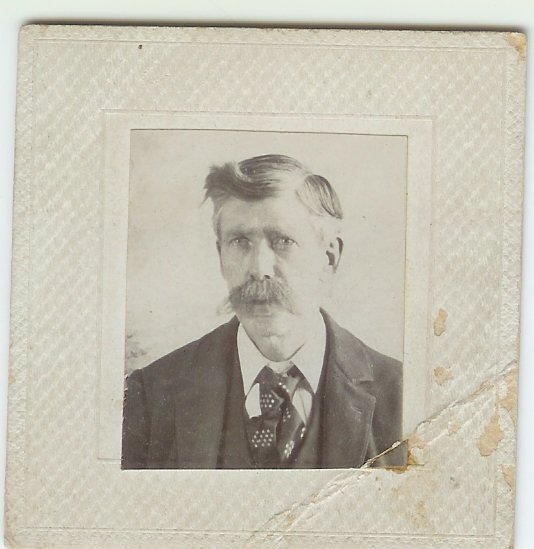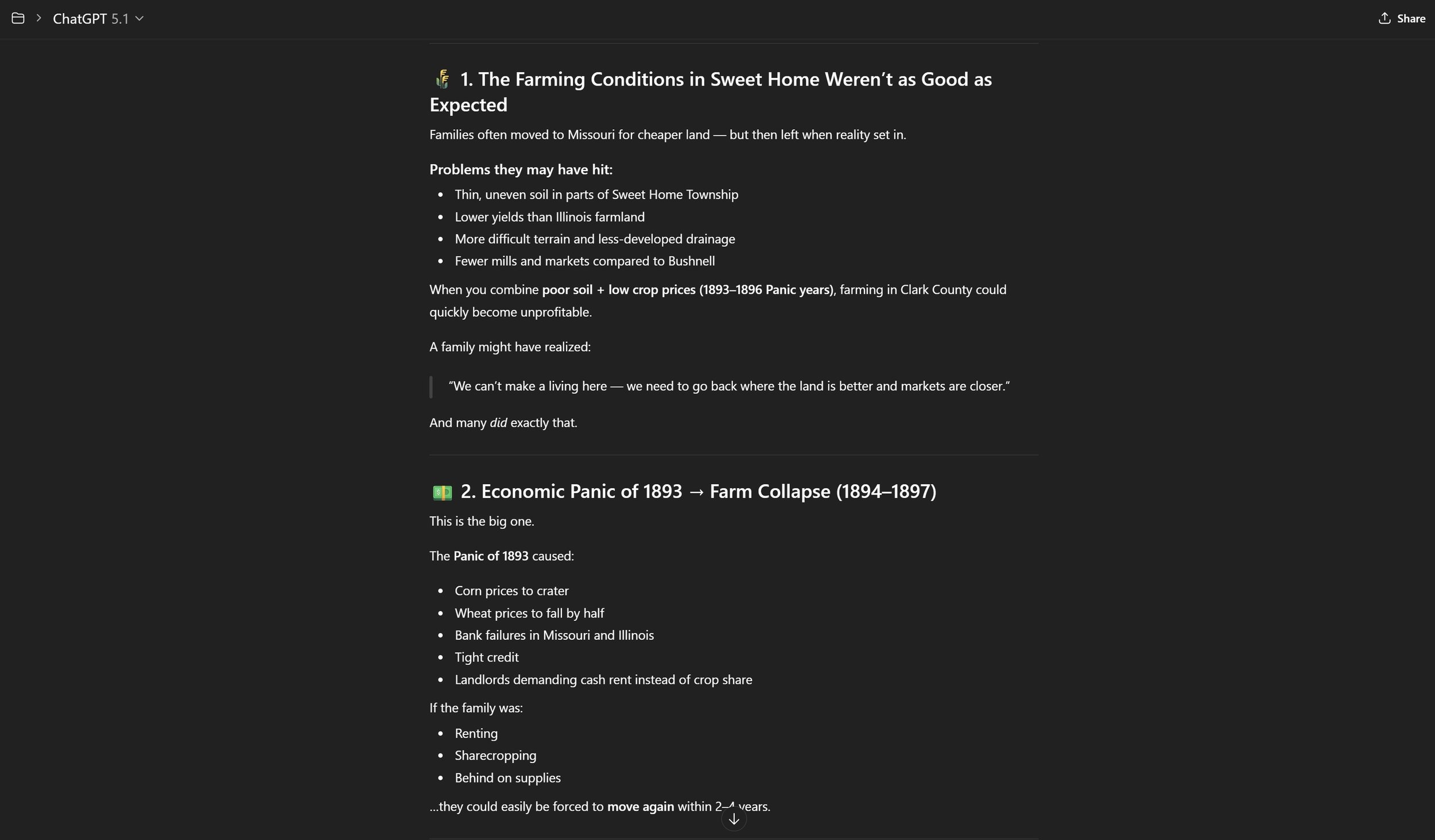How AI Helped Me Reconstruct an 1890s Family Move
One of my favorite parts of genealogy is imagining the real lives of the people in our tree. Not just where they lived, but how they actually moved from place to place. Recently I used AI to answer a question I had wondered about for years. How did A. J. Copeland move his wife and three children from Bushnell, Illinois to Sweet Home Township, Clark County, Missouri sometime between 1890 and 1896?
Alpheus J. Copeland - photo dated by my Photo Whisperer Custom GPT to 1905–1918.
This was not a simple move. They had to travel more than one hundred miles, cross the Mississippi River, and end up in a rural part of northeast Missouri. I knew the start and end points, but not the journey in between. So I asked AI to help me fill in the gaps.
So I asked.
Step 1. Let AI reconstruct the route
I gave AI the locations and timeframe, and it quickly mapped out the most likely route using railroad lines that existed in the 1890s. The answer was straightforward. They probably took the Chicago, Burlington and Quincy Railroad from Bushnell to Quincy, crossed the Mississippi by bridge or ferry, and continued by rail to Kahoka. From there it was a short wagon ride into Sweet Home Township. The screenshot in the blog shows the exact reasoning.
ChatGPT Results
Step 2. Ask AI how much it actually cost
Next I asked what a family of five would have paid for this trip. Using period railroad fares, AI estimated a total cost of five to seven dollars in the 1890s. Adjusted for today, that is about one hundred seventy five to two hundred eighty dollars. Surprisingly affordable for a full family relocation. The calculation screenshot is included in the post.
ChatGPT Results
Step 3. Ask AI why they would have moved at all
I also wanted to know why they left Illinois in the first place. AI pulled together the larger historical context. Farmers in Illinois were struggling with falling crop prices, rising freight costs, and heavy debt. Land in northeast Missouri was cheaper, taxes were lower, and Sweet Home Township was actively recruiting new farm families. For someone under financial or personal pressure, Missouri offered a fresh start. Everything about the timing fits what we know of the Copeland family.
ChatGPT Results
Step 4. Ask AI Why They Returned to Illinois
The family only stayed in Missouri a few years. AI explained why many families followed this same pattern. Farming conditions in Sweet Home Township were tougher than expected, and the Panic of 1893 sent crop prices plummeting. Illness, harsh winters, and limited support networks made life difficult. With better farmland and stronger family ties waiting back in Bushnell, the return move was a practical decision. They simply took the same rail line home.
ChatGPT Results
Why this matters
Research like this shows how AI can help us understand our ancestors beyond names and dates. It connects scattered clues, reconstructs realistic travel routes, and adds historical context in minutes. It does not replace traditional genealogy, but it gives us a faster path to the stories behind the records.
Now I can picture the Copeland family loading trunks at the Bushnell depot, crossing the Mississippi, and taking a chance on a new life in Missouri. And I understand why they came back. If you have ever wondered how your own ancestors got from one place to another, try asking AI. You may uncover more of their story than you expect.




